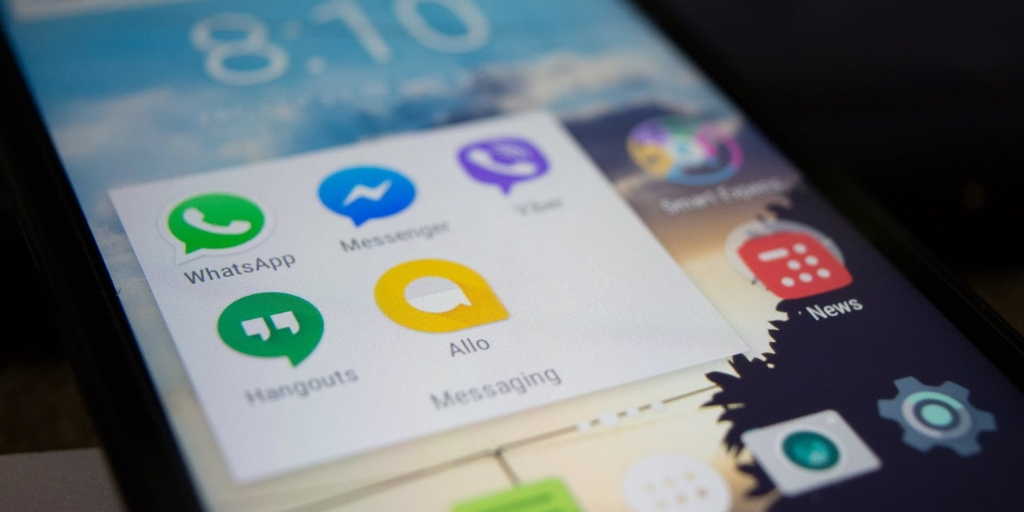With a growing shift toward social messaging platforms, your business needs to find a way to incorporate these apps into your content marketing strategy.
Feel like giving yourself a pat on the back for finally getting a handle on how to effectively use social media networks like Facebook, Instagram, Google+ and Twitter in supply chain marketing? Well, you might not want to celebrate just yet.
In the constantly changing world of online connection, social messaging apps are the new social media. The top four social messaging platforms have overtaken the top four social media networks in terms of monthly active users.
The increasing popularity of social messaging platforms means your business needs to consider how to incorporate social messaging apps into your marketing strategy if you want to continue to best meet your costumers.
Here’s what supply chain businesses need to know about social messaging apps — and why to use them in supply chain management.
What’s a social messaging platform?
Social messaging platforms are exactly as they sound. They are applications that allow people to easily and quickly connect with friends, family, and businesses for personal and professional conversations. They are basically email’s hip, smart, stylish grandchild. Sending text, photos, multimedia files, and even making voice calls are all available options.
Let’s take a closer look at the top four social messaging apps to gain a better sense of what they can do.
- WhatsApp. The enormously popular WhatsApp, owned by Facebook, is the most used social messaging app in the world with more than 1.5 billion users. Easy to understand and designed for smartphones and tablets, users can send text messages, photos, voice recordings and videos and even make voice calls over the internet. And guess what? It’s all free. In addition, WhatsApp lets users set a status for their contacts to see without having to message everyone, use the map function to communicate location info with someone, and share files from a phone or computer.
- Facebook Messenger. Facebook has its own messaging app too, and it’s just behind WhatsApp at 1.3 billion users. This social messaging app builds on Facebook’s user network but the message functionality was separated from the main social networking app a few years ago. Users can send messages and exchange photos, videos, stickers, and audio files, and they can react to other users’ messages too. You can also make free voice and video calls through the app.
- WeChat. With nearly 700 million users, WeChat dominates in China and is making a serious push for global reach. WeChat provides users with free mobile instant messaging, video and voice calls, group chat, and multimedia messaging with images, video, audio, stickers, and more.
- Viber. Viber is another free messaging app that works between phones, tablets, and computers. It currently has 400 million users. Users can send texts, stickers and emoticons, photos, voice and video messages. Viber also has a feature called Communities, which are public chat channels where the user can like and reply to messages in group conversations. It also has a built-in QR code scanner and, like WhatsApp, the ability to share your GPS location in conversations.
Why move to social messaging platforms?
If you’re questioning why to move toward one (or more!) of these four social messaging apps, here’s the short answer: because your customers are.
[bctt tweet=”If you’re questioning why to move towards a social messaging app the answer is that supply chain businesses can use these platforms to deliver content, engage with customers one-on-one, and offer superior personalized customer service.” username=”Fronetics”]
The longer answer is that supply chain businesses can use these platforms to deliver content, engage with customers one-on-one, and offer superior personalized customer service, all of which result in high-quality relationships and leads. And with the successful rise of chatbots in supply chain marketing, this kind of interaction is more feasible than it may initially sound.
If you need more reasons, don’t just take my word for it. Consider these 10 graphs that show why your business should gravitate toward increasing your social messaging presence.
Social messaging apps for the supply chain
So, which social messaging app is best for the supply chain? There’s no one-size-fits-all answer here. These are the top 4 platforms where your customers and potential customers are spending time, so this is where you should meet them.
But we all know that “doing it all” isn’t always feasible. So, in order to get the most from your time (and budget!), make sure to take the time to choose the best social messaging app for your marketing needs.
Ask these important questions:
- Who is my target audience?
- How will the app add value to my target audiences?
- How do I want to deliver my content?
- Do I want to use more than one app?
- How frequently will I be marketing on the app?
These questions can help you find the social messaging apps that will work best for your marketing campaign and start connecting with customers in a more personalized way.
With the shift toward messaging apps, your business needs to find a way to do the same. But however you plan to incorporate a social messaging app, here’s a final word of caution: you aren’t a friend, and you aren’t family. Be engaging, be helpful, be available. Just don’t be intrusive. The 2018 Sprout Social Index shows that people are still using social media primarily for connecting with friends and family. As businesses consider how to use messaging apps to deliver content and engage with leads, it is very thin line between getting into your costumers’ hearts or getting under their skin.
This post originally appeared on EBN Online.
Related posts:


